FINC20019: Money and Capital Market Analysis - Secondary Markets
VerifiedAdded on 2022/09/09
|5
|842
|17
Presentation
AI Summary
This report provides an analysis of money and capital markets, with a specific focus on secondary markets and the application of futures contracts within the financial landscape. The discussion begins with an overview of financial markets and their crucial role in ensuring fund availability and facilitating investor returns. It differentiates between capital and money markets. The report then delves into the types of secondary markets, including direct search, broker, dealer, and auction markets, explaining how each functions. The report subsequently explores the utilization of futures contracts by financial market participants, highlighting their role in price risk management and hedging strategies. The conclusion underscores the importance of secondary markets in providing real-time securities valuation and liquidity. The report also emphasizes the role of futures in price discovery and risk mitigation for investors. The report uses the provided assignment brief to provide a good understanding of the topic.
1 out of 5
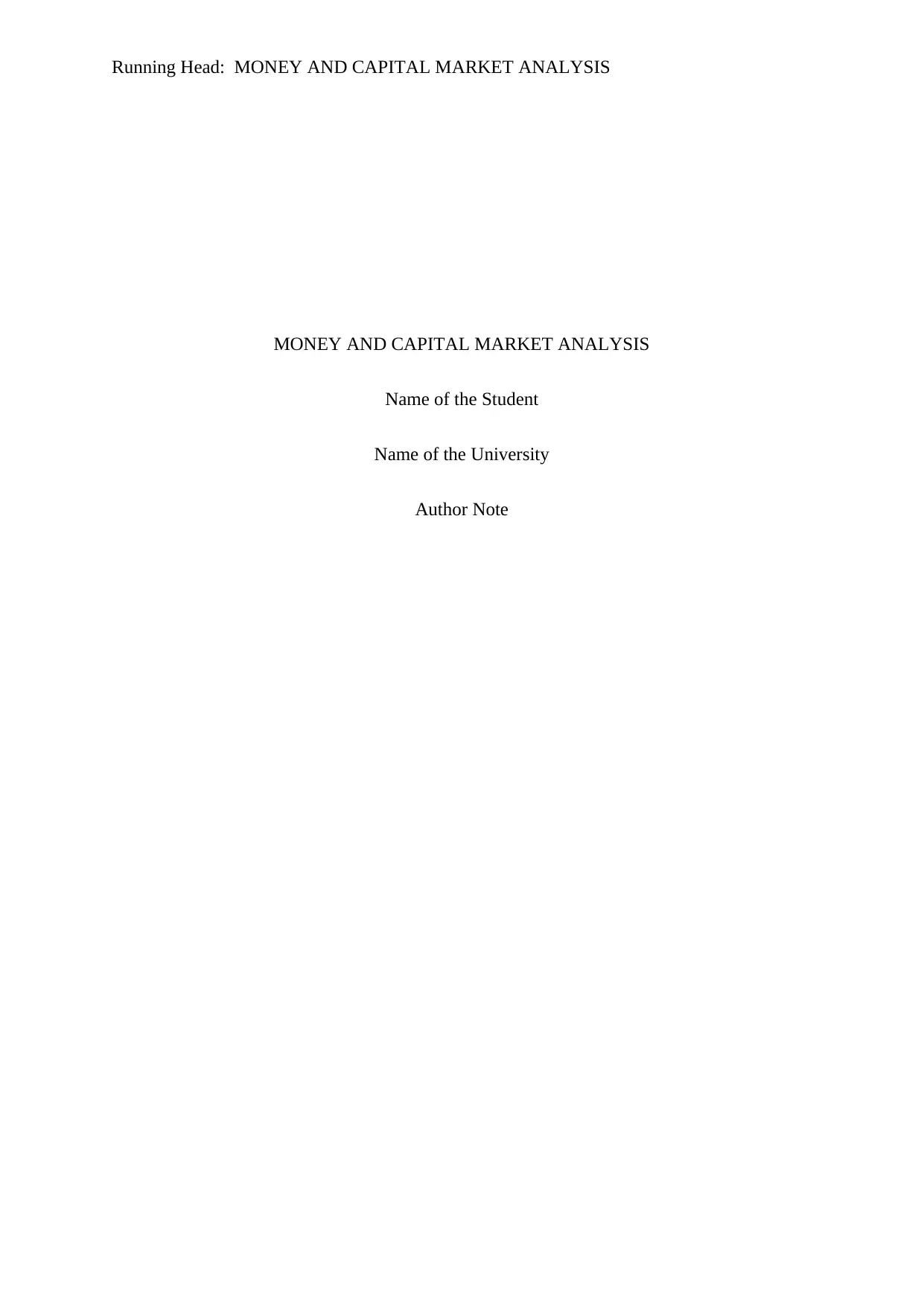
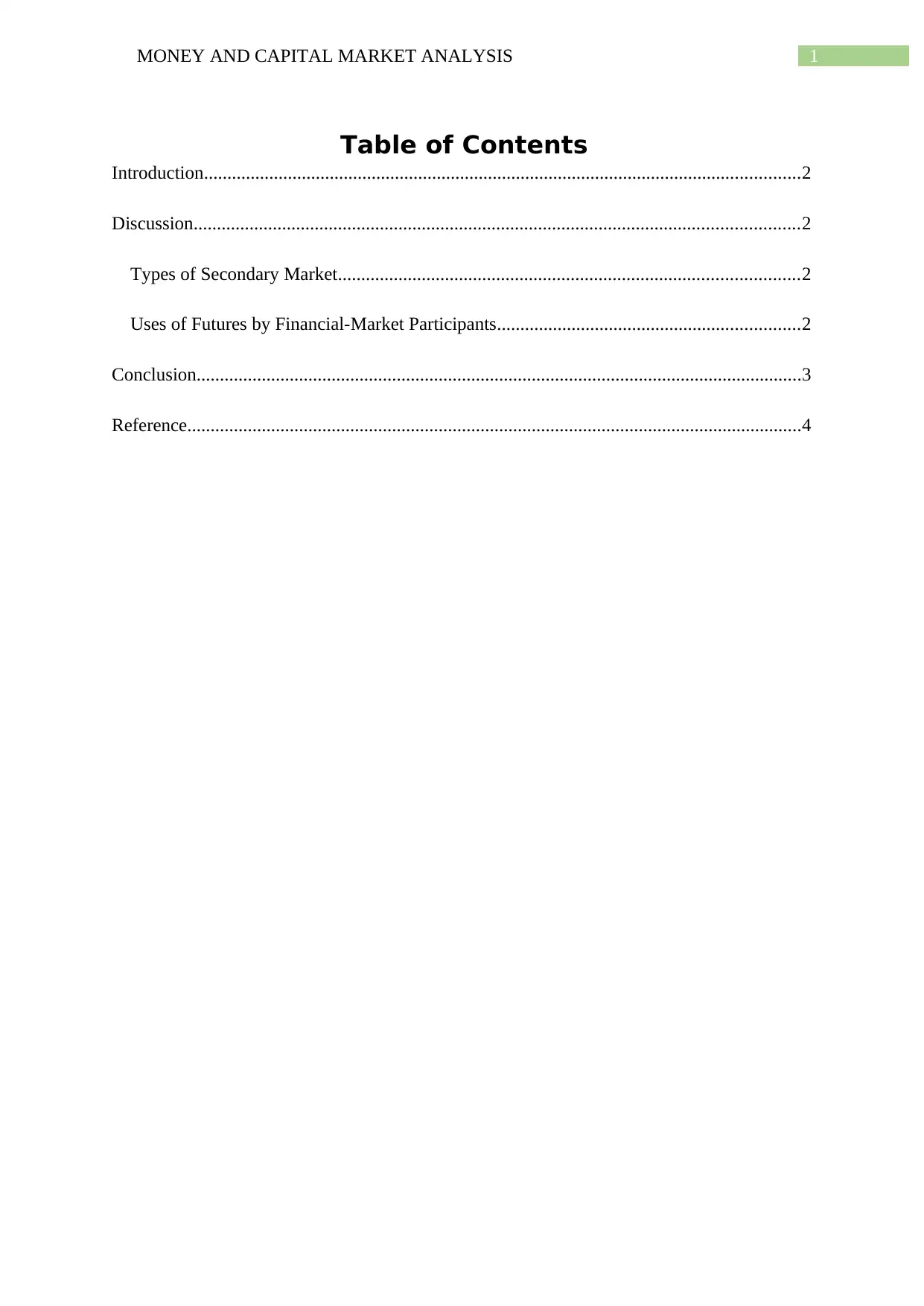
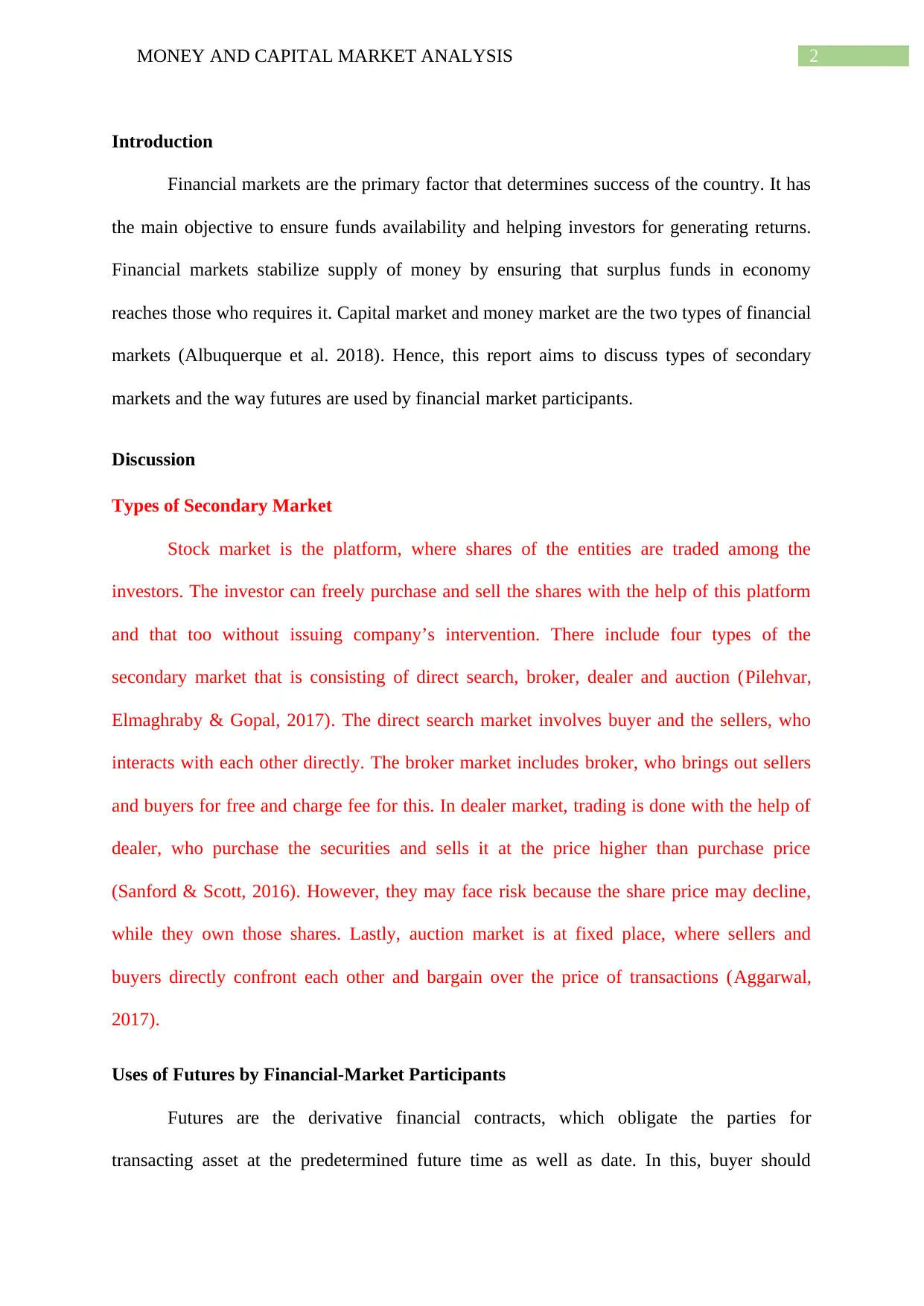

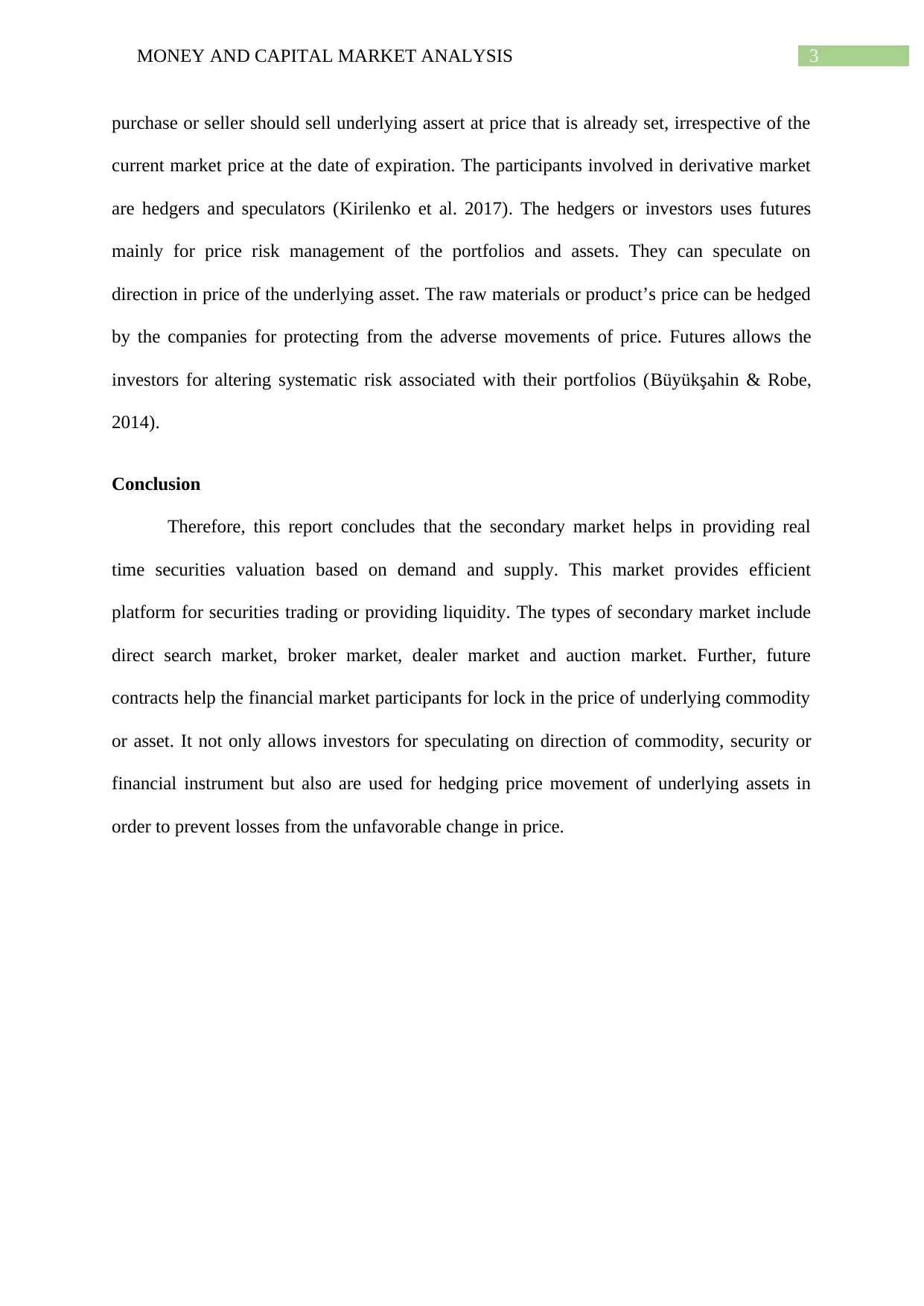
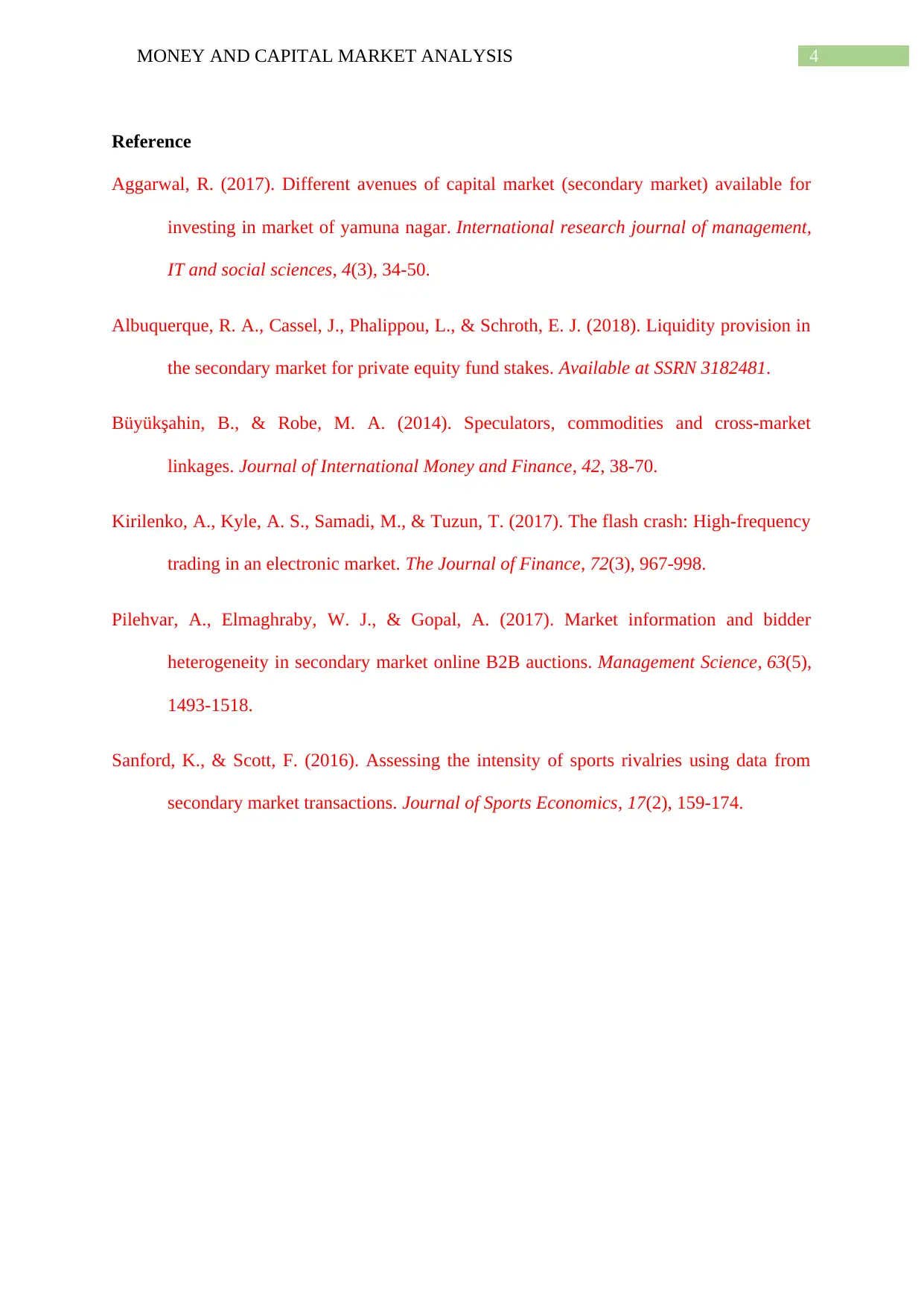






![[object Object]](/_next/static/media/star-bottom.7253800d.svg)